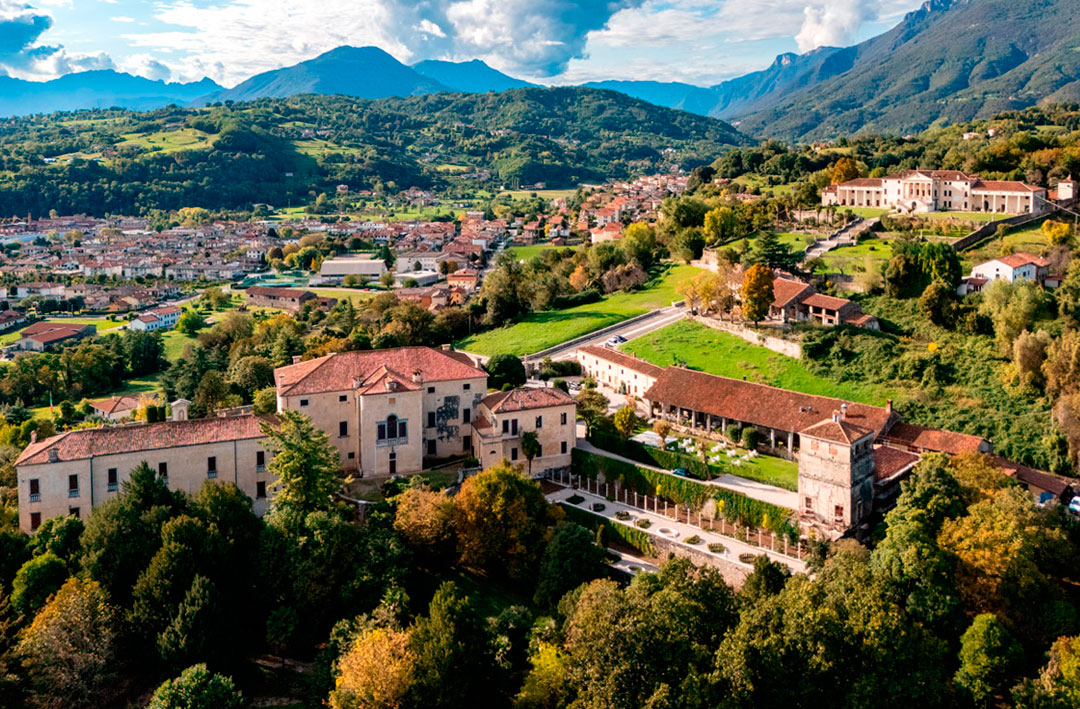
HISTORY AND LANDSCAPE
Villa Godi Malinverni - Lugo di Vicenza

Villa Godi Malinverni was built between 1538 and 1542 at the behest of Count Gerolamo Godi, one of the wealthiest and most influential aristocrats of Vicenza's 16th-century nobility.
The Godi family was among the most powerful in Renaissance Vicenza, thanks to their exceptional commercial abilities, which made them leaders in the European silk trade. Their estates extended throughout the Vicenza countryside, including the territories of what is now Lugo di Vicenza, where they owned an initial residence as early as the late 15th century on the site where the villa now stands.
In his vision for the villa, Gerolamo Godi entrusted the project to Andrea della Gondola, a young stonemason and architect who had worked in the workshops of the Vicenza-based Pedemuro brothers.
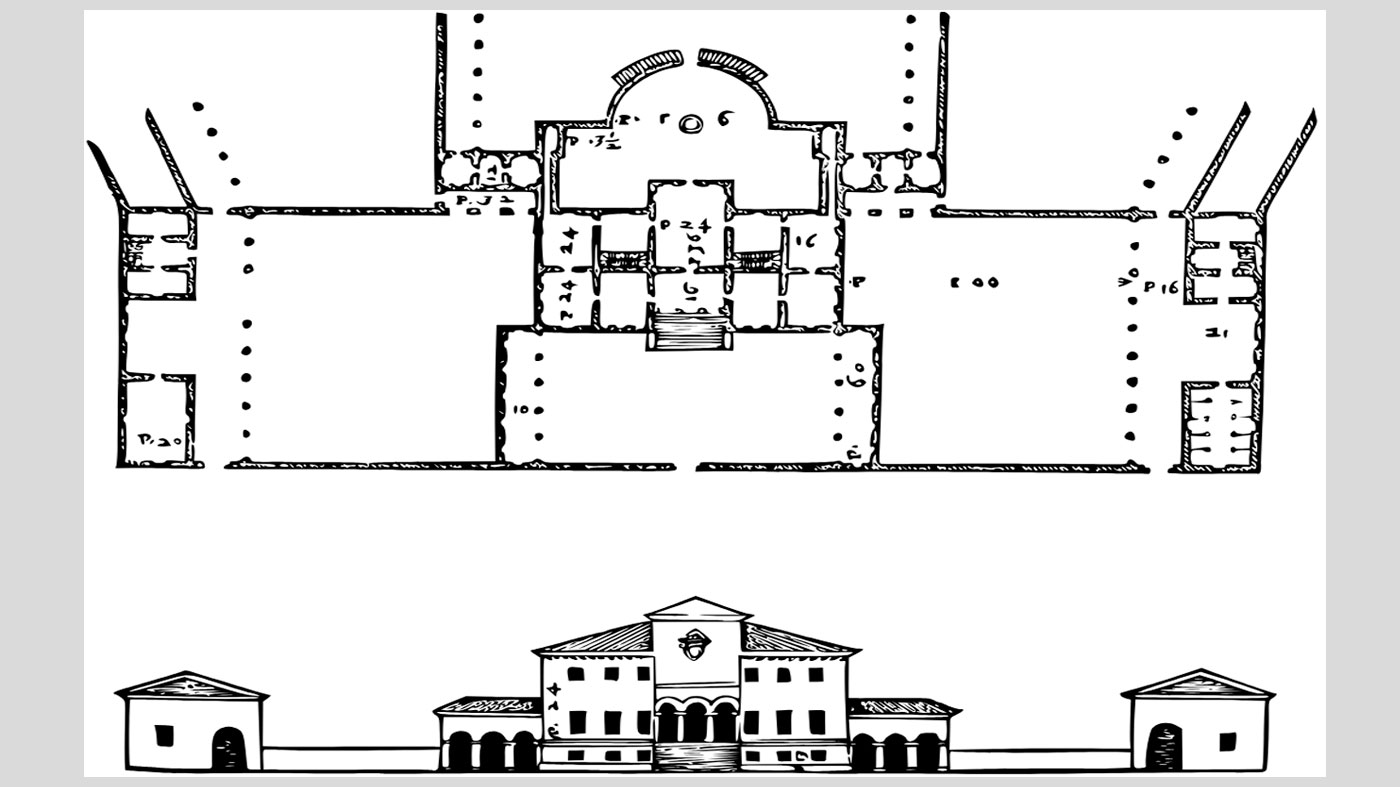
Andrea di Pietro della Gondola, known worldwide as Andrea Palladio, was born in Padua in 1508, into a humble family. He began his career as a stonemason, first in Padua and later in Vicenza, where he established himself as an architect, partly thanks to his meeting with the Vicenza nobleman Giangiorgio Trissino. Trissino, a humanist, poet, and playwright, took Palladio under his wing and gave him the nickname "Palladio" inspired by a character from one of his works.
As a prominent architect serving the Vicenza nobility, Palladio published The Four Books of Architecture in 1570. This comprehensive four-volume treatise covered a wide range of architectural topics and included descriptions of his completed and unfinished projects. Among these books, there is an autographed description of Villa Godi and its gardens.
The success of this treatise sparked a movement centered on the imitation of Palladio's works, known as Palladianism, which gained worldwide acclaim. A notable example of this movement is James Hoban, the architect renowned for designing the White House in Washington, the official residence of the President of the United States.
Once completed, Villa Godi was adorned between 1542 and 1562 by some of the most celebrated painters of the time. As Palladio himself wrote, these included: Gualtiero Padovano, Battista Zelotti, and Gianbattista del Moro.
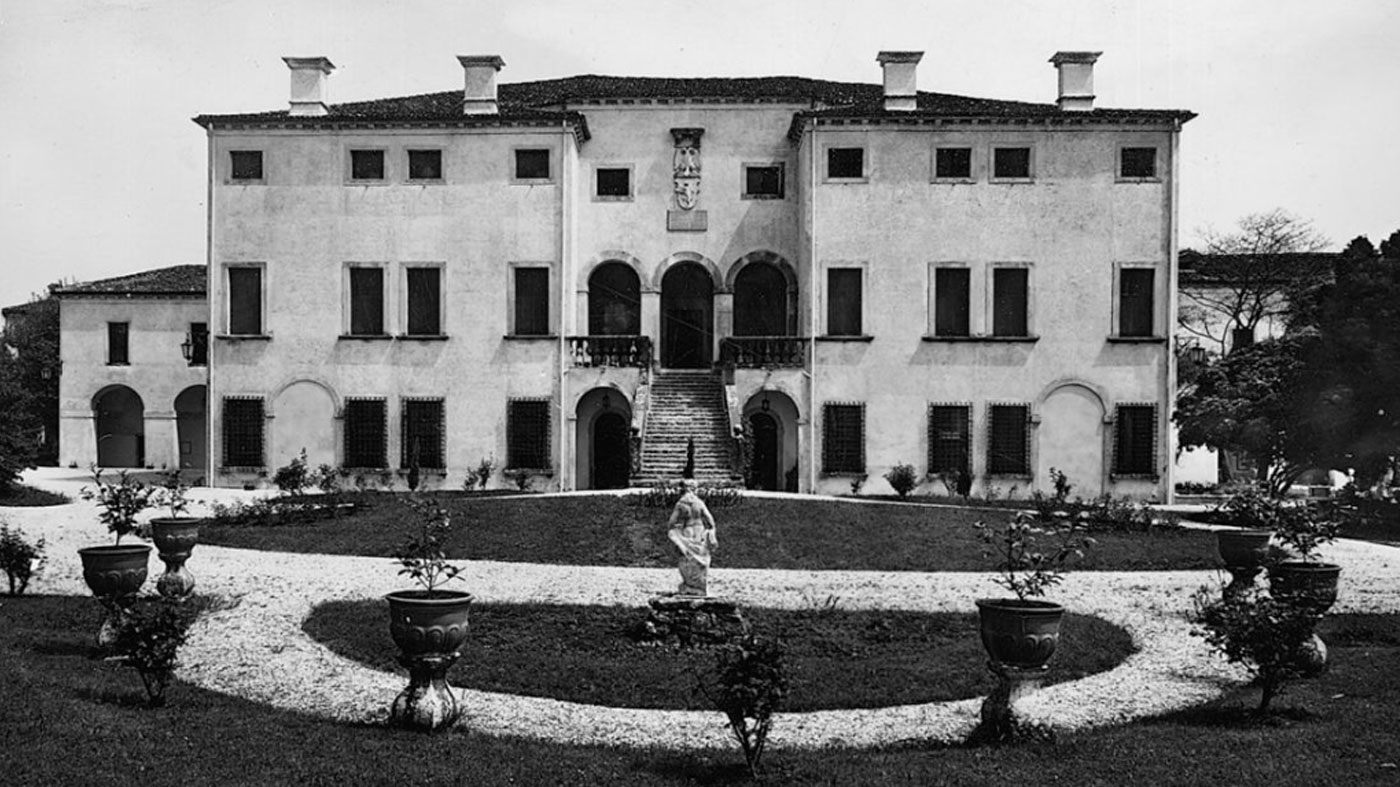
The "fabbrica" (the estate) encompassed multiple aspects: primarily, it was an agricultural enterprise, a place where the nobility could manage and oversee their lands directly. It was also a site of self-representation and leisure, where business dealings were conducted, banquets organized, or retreats from the prying eyes of the city.
Over the centuries, the villa changed hands among various noble families: the Godi, the Porto, and the Piovene. In the 19th century, the Piovene family enriched the villa with the paleontological museum and the romantic park.
For much of the 20th century, the villa was part of the Valmarana family's holdings and bore witness to the two World Wars. During the First World War, it served as the headquarters for the British Battalion under General Caravan and was the residence of the then Prince of Wales in 1918. In the Second World War, it became a venue for representation and ceremonies for Fascist generals.
In 1953, the villa's halls and gardens became the set for one of the greatest masterpieces of Italian neorealism: Senso by Luchino Visconti, starring Alida Valli and Farley Granger.
In 1962, the villa was purchased by Professor Remo Malinverni, a Milanese entrepreneur who dedicated the final years of his life to its restoration, preservation, and enhancement.
In 1996, the villa was included in the UNESCO World Heritage List along with other Palladian villas.
Today, the site is managed by Remo's grandson, Dr. Christian Malinverni. The villa, its gardens, and its historic park have become destinations for tourism, cultural and educational activities, and private celebrations.
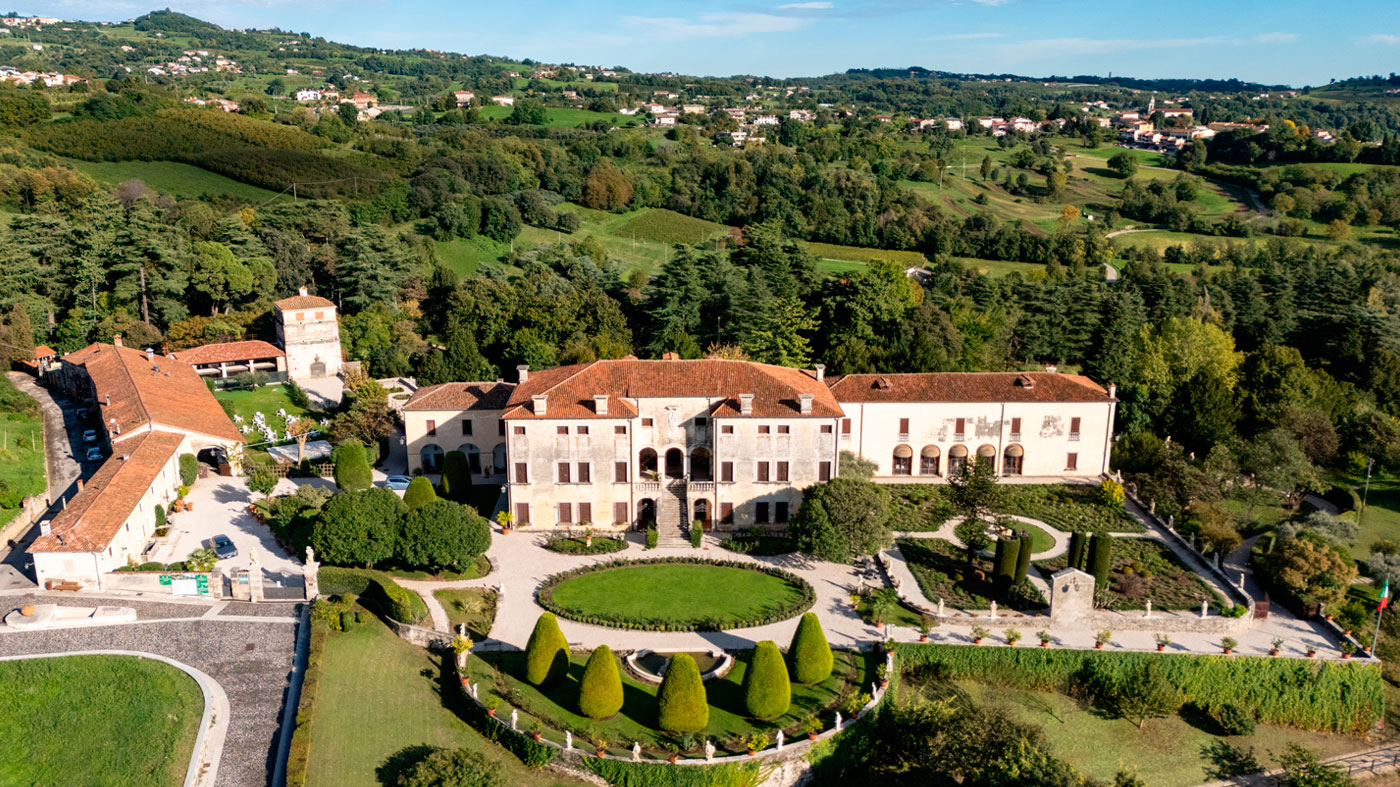
The Villa Godi Malinverni site, along with its romantic park, is nestled within an extraordinary landscape of great aesthetic and historical value in the Vicenza foothills: the Lonedo hill, situated between the Asiago Plateau and the valley of the Astico River, within the municipalities of Lugo di Vicenza and Fara Vicentino (VI).
This hill, inhabited since prehistoric times, was immortalized in human history during the 16th century through the architectural genius of Andrea Palladio.
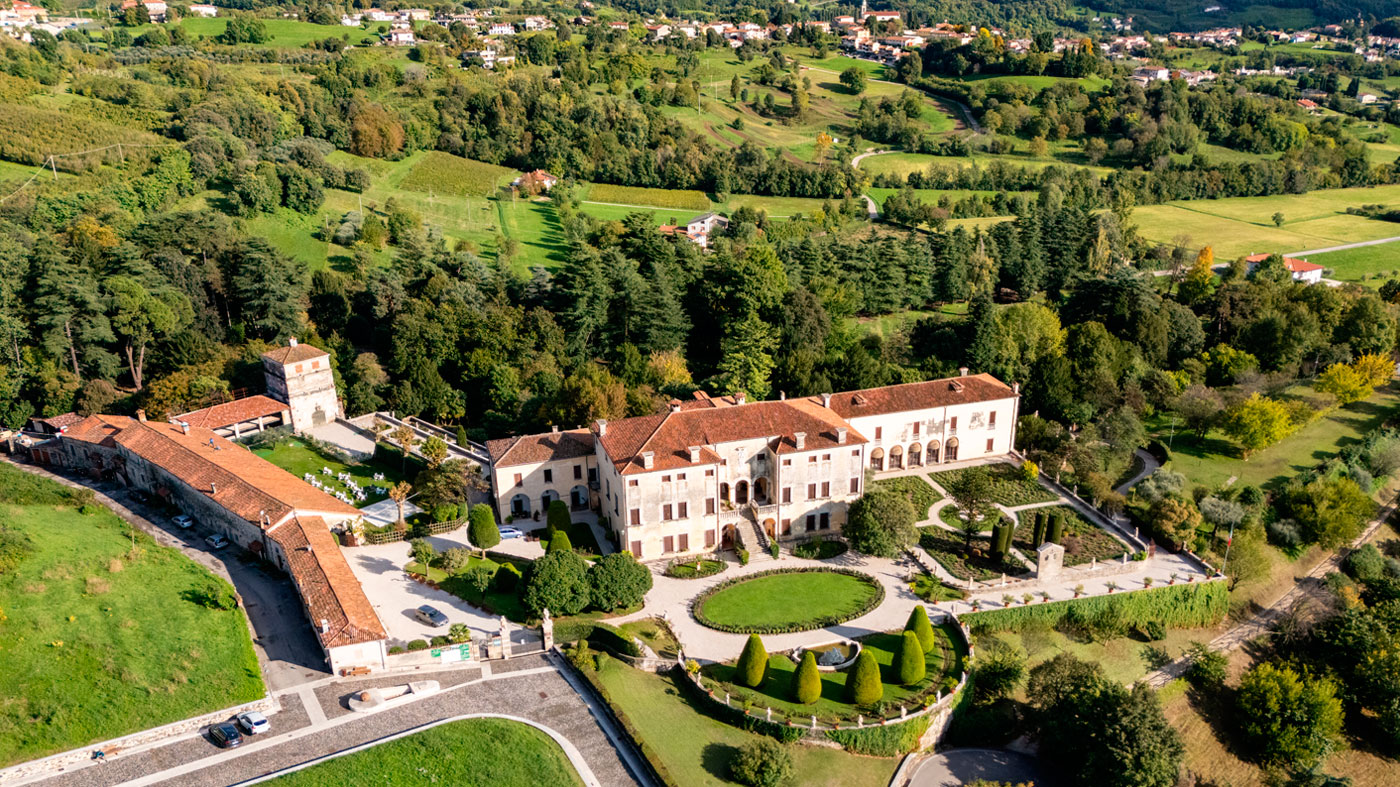
The presence of two neighboring Palladian villas makes this hill unique in the world, perfectly integrated into the stunning pre-Alpine landscape of the Veneto foothills and in constant communication with the hills and the lush plains of the upper Vicenza area. From the Loggia of Villa Godi Malinverni and its Palladian gardens, one can admire a breathtaking panorama, with the impressionâthanks to Palladio's masterful use of perspective that the surrounding landscape envelops you, becoming an extension of the gardens themselves.
For this reason, this work by Palladio is emblematic in defining the concept of the "Palladian landscape," coined in 1995 by the geographer Denis Cosgrove. It refers to an architectural landscape intentionally designed to be in harmony with the natural surroundings, exploiting their potential and making the two elements inseparable. Cosgrove himself chose the landscape visible from the Loggia of Villa Godi Malinverni as the cover image for his famous paper "The Palladian Landscape".


